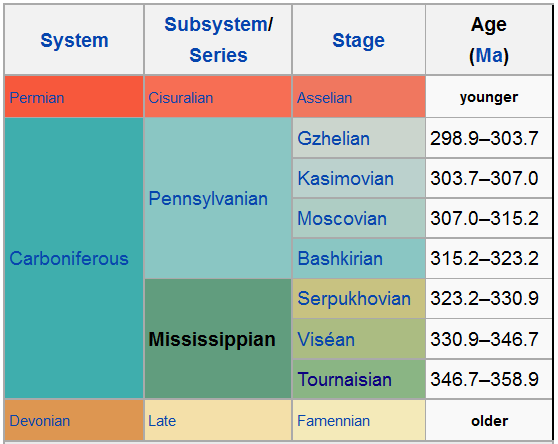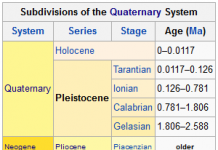The Serpukhovian is in the ICS geologic timescale the uppermost stage or youngest age of the Mississippian, the lower subsystem of the Carboniferous. The Serpukhovian age lasted from 330.9 ± 0.2 Ma to 323.2 ± 0.4 Ma. It is preceded by the Visean and is followed by the Bashkirian.
The Serpukhovian correlates with the lower part of the Namurian stage of European stratigraphy and the middle and upper parts of the Chesterian stage of North American stratigraphy.
Name and definition
The Serpukhovian stage was proposed in 1890 by Russian stratigrapher Sergei Nikitin and was introduced in the official stratigraphy of European Russia in 1974. It was named after the city of Serpukhov, near Moscow. The ICS later used the upper Russian subdivisions of the Carboniferous in its international geologic time scale.
The base of the Serpukhovian is at the first appearance of the conodont Lochriea crusiformis. In 2007, no GSSP had been assigned to the Serpukhovian stage yet. The top of the stage (the base of the Pennsylvanian subsystem and Bashkirian stage) is at the first appearance of the conodont Declinognathodus nodiliferus. It is also slightly above the first appearance of the foram Globivalvulina bulloides, genozone of the ammonoid genus Homoceras and the ammonoid biozone of Isohomoceras subglobosum.
Subdivision
The Serpukhovian stage includes four conodont biozones:
- Gnathodus postbilineatus Zone
- Gnathodus bollandensis Zone
- Lochriea cruciformis Zone
- Lochriea ziegleri Zone











